-
FACTOR ANALYSIS
-
\r\n\r\n\r\nValue chain Analysis
-
\r\n\r\n\r\nPorter's
-
Five Forces Analysis
-
\r\n\r\n\r\nBargaining Power of Suppliers
-
\r\n\r\n\r\nBargaining
-
Power of Buyers
-
\r\n\r\n\r\nThreat of New Entrants
-
\r\n\r\n\r\nThreat
-
of Substitutes
-
\r\n\r\n\r\nIntensity of Rivalry
-
\r\n\r\n\r\n\r\n\r\nCOVID-19
-
Impact Analysis
-
\r\n\r\n\r\nMarket Impact Analysis
-
\r\n\r\n\r\nRegional
-
Impact
-
\r\n\r\n\r\nOpportunity and Threat Analysis
-
\r\n\r\n\r\n\r\n\r\n\r\n\r\n
-
\r\n
-
\r\n\r\n\r\nBottled
-
Water Products Market, BY Type (USD Billion)
-
\r\n\r\n\r\nSpring
-
Water
-
\r\n\r\n\r\nMineral Water
-
\r\n\r\n\r\nPurified
-
Water
-
\r\n\r\n\r\nSparkling Water
-
\r\n\r\n\r\nFlavored
-
Water
-
\r\n\r\n\r\n\r\n\r\nBottled Water Products
-
Market, BY Packaging Type (USD Billion)
-
\r\n\r\n\r\nPET
-
Bottles
-
\r\n\r\n\r\nGlass Bottles
-
\r\n\r\n\r\nCartons
-
\r\n\r\n\r\nKegs
-
\r\n\r\n\r\nPouches
-
\r\n\r\n\r\n\r\n\r\nBottled
-
Water Products Market, BY Distribution Channel (USD Billion)
-
\r\n\r\n\r\nSupermarkets/Hypermarkets
-
\r\n\r\n\r\nConvenience
-
Stores
-
\r\n\r\n\r\nOnline Retail
-
\r\n\r\n\r\nRestaurants/Cafes
-
\r\n\r\n\r\nHealth
-
Food Stores
-
\r\n\r\n\r\n\r\n\r\nBottled Water Products
-
Market, BY End User (USD Billion)
-
\r\n\r\n\r\nResidential
-
\r\n\r\n\r\nCommercial
-
\r\n\r\n\r\nInstitutional
-
\r\n\r\n\r\n\r\n\r\nBottled
-
Water Products Market, BY Regional (USD Billion)
-
\r\n\r\n\r\nNorth
-
America
-
\r\n\r\n\r\nUS
-
\r\n\r\n\r\nCanada
-
\r\n\r\n\r\n\r\n\r\nEurope
-
\r\n\r\n\r\nGermany
-
\r\n\r\n\r\nUK
-
\r\n\r\n\r\nFrance
-
\r\n\r\n\r\nRussia
-
\r\n\r\n\r\nItaly
-
\r\n\r\n\r\nSpain
-
\r\n\r\n\r\nRest
-
of Europe
-
\r\n\r\n\r\n\r\n\r\nAPAC
-
\r\n\r\n\r\nChina
-
\r\n\r\n\r\nIndia
-
\r\n\r\n\r\nJapan
-
\r\n\r\n\r\nSouth
-
Korea
-
\r\n\r\n\r\nMalaysia
-
\r\n\r\n\r\nThailand
-
\r\n\r\n\r\nIndonesia
-
\r\n\r\n\r\nRest
-
of APAC
-
\r\n\r\n\r\n\r\n\r\nSouth America
-
\r\n\r\n\r\nBrazil
-
\r\n\r\n\r\nMexico
-
\r\n\r\n\r\nArgentina
-
\r\n\r\n\r\nRest
-
of South America
-
\r\n\r\n\r\n\r\n\r\nMEA
-
\r\n\r\n\r\nGCC
-
Countries
-
\r\n\r\n\r\nSouth Africa
-
\r\n\r\n\r\nRest
-
of MEA
-
\r\n\r\n\r\n\r\n\r\n\r\n\r\n
-
\r\n
-
\r\n\r\n\r\nCompetitive
-
Landscape
-
\r\n\r\n\r\nOverview
-
\r\n\r\n\r\nCompetitive
-
Analysis
-
\r\n\r\n\r\nMarket share Analysis
-
\r\n\r\n\r\nMajor
-
Growth Strategy in the Bottled Water Products Market
-
\r\n\r\n\r\nCompetitive
-
Benchmarking
-
\r\n\r\n\r\nLeading Players in Terms of Number of Developments
-
in the Bottled Water Products Market
-
\r\n\r\n\r\nKey developments
-
and growth strategies
-
\r\n\r\n\r\nNew Product Launch/Service Deployment
-
\r\n\r\n\r\nMerger
-
& Acquisitions
-
\r\n\r\n\r\nJoint Ventures
-
\r\n\r\n\r\n\r\n\r\nMajor
-
Players Financial Matrix
-
\r\n\r\n\r\nSales and Operating Income
-
\r\n\r\n\r\nMajor
-
Players R&D Expenditure. 2023
-
\r\n\r\n\r\n\r\n\r\n\r\n\r\nCompany
-
Profiles
-
\r\n\r\n\r\nSan Pellegrino
-
\r\n\r\n\r\nFinancial
-
Overview
-
\r\n\r\n\r\nProducts Offered
-
\r\n\r\n\r\nKey
-
Developments
-
\r\n\r\n\r\nSWOT Analysis
-
\r\n\r\n\r\nKey
-
Strategies
-
\r\n\r\n\r\n\r\n\r\nDanone
-
\r\n\r\n\r\nFinancial
-
Overview
-
\r\n\r\n\r\nProducts Offered
-
\r\n\r\n\r\nKey
-
Developments
-
\r\n\r\n\r\nSWOT Analysis
-
\r\n\r\n\r\nKey
-
Strategies
-
\r\n\r\n\r\n\r\n\r\nSmartwater
-
\r\n\r\n\r\nFinancial
-
Overview
-
\r\n\r\n\r\nProducts Offered
-
\r\n\r\n\r\nKey
-
Developments
-
\r\n\r\n\r\nSWOT Analysis
-
\r\n\r\n\r\nKey
-
Strategies
-
\r\n\r\n\r\n\r\n\r\nFiuggi
-
\r\n\r\n\r\nFinancial
-
Overview
-
\r\n\r\n\r\nProducts Offered
-
\r\n\r\n\r\nKey
-
Developments
-
\r\n\r\n\r\nSWOT Analysis
-
\r\n\r\n\r\nKey
-
Strategies
-
\r\n\r\n\r\n\r\n\r\nPoland Spring
-
\r\n\r\n\r\nFinancial
-
Overview
-
\r\n\r\n\r\nProducts Offered
-
\r\n\r\n\r\nKey
-
Developments
-
\r\n\r\n\r\nSWOT Analysis
-
\r\n\r\n\r\nKey
-
Strategies
-
\r\n\r\n\r\n\r\n\r\nAquafina
-
\r\n\r\n\r\nFinancial
-
Overview
-
\r\n\r\n\r\nProducts Offered
-
\r\n\r\n\r\nKey
-
Developments
-
\r\n\r\n\r\nSWOT Analysis
-
\r\n\r\n\r\nKey
-
Strategies
-
\r\n\r\n\r\n\r\n\r\nNestle
-
\r\n\r\n\r\nFinancial
-
Overview
-
\r\n\r\n\r\nProducts Offered
-
\r\n\r\n\r\nKey
-
Developments
-
\r\n\r\n\r\nSWOT Analysis
-
\r\n\r\n\r\nKey
-
Strategies
-
\r\n\r\n\r\n\r\n\r\nPepsiCo
-
\r\n\r\n\r\nFinancial
-
Overview
-
\r\n\r\n\r\nProducts Offered
-
\r\n\r\n\r\nKey
-
Developments
-
\r\n\r\n\r\nSWOT Analysis
-
\r\n\r\n\r\nKey
-
Strategies
-
\r\n\r\n\r\n\r\n\r\nCocaCola
-
\r\n\r\n\r\nFinancial
-
Overview
-
\r\n\r\n\r\nProducts Offered
-
\r\n\r\n\r\nKey
-
Developments
-
\r\n\r\n\r\nSWOT Analysis
-
\r\n\r\n\r\nKey
-
Strategies
-
\r\n\r\n\r\n\r\n\r\nFiji Water
-
\r\n\r\n\r\nFinancial
-
Overview
-
\r\n\r\n\r\nProducts Offered
-
\r\n\r\n\r\nKey
-
Developments
-
\r\n\r\n\r\nSWOT Analysis
-
\r\n\r\n\r\nKey
-
Strategies
-
\r\n\r\n\r\n\r\n\r\nNestle Waters
-
\r\n\r\n\r\nFinancial
-
Overview
-
\r\n\r\n\r\nProducts Offered
-
\r\n\r\n\r\nKey
-
Developments
-
\r\n\r\n\r\nSWOT Analysis
-
\r\n\r\n\r\nKey
-
Strategies
-
\r\n\r\n\r\n\r\n\r\nMonster Beverage
-
\r\n\r\n\r\nFinancial
-
Overview
-
\r\n\r\n\r\nProducts Offered
-
\r\n\r\n\r\nKey
-
Developments
-
\r\n\r\n\r\nSWOT Analysis
-
\r\n\r\n\r\nKey
-
Strategies
-
\r\n\r\n\r\n\r\n\r\nPrimo Water Corporation
-
\r\n\r\n\r\nFinancial
-
Overview
-
\r\n\r\n\r\nProducts Offered
-
\r\n\r\n\r\nKey
-
Developments
-
\r\n\r\n\r\nSWOT Analysis
-
\r\n\r\n\r\nKey
-
Strategies
-
\r\n\r\n\r\n\r\n\r\nVoss Water
-
\r\n\r\n\r\nFinancial
-
Overview
-
\r\n\r\n\r\nProducts Offered
-
\r\n\r\n\r\nKey
-
Developments
-
\r\n\r\n\r\nSWOT Analysis
-
\r\n\r\n\r\nKey
-
Strategies
-
\r\n\r\n\r\n\r\n\r\nEvian
-
\r\n\r\n\r\nFinancial
-
Overview
-
\r\n\r\n\r\nProducts Offered
-
\r\n\r\n\r\nKey
-
Developments
-
\r\n\r\n\r\nSWOT Analysis
-
\r\n\r\n\r\nKey
-
Strategies
-
\r\n\r\n\r\n\r\n\r\n\r\n\r\nAppendix
-
\r\n\r\n\r\nReferences
-
\r\n\r\n\r\nRelated
-
Reports
-
\r\n\r\n\r\n\r\n\r\nLIST Of tables
-
\r\n
-
\r\n\r\n\r\nLIST
-
OF ASSUMPTIONS
-
\r\n\r\n\r\nNorth America Bottled Water Products Market
-
SIZE ESTIMATES & FORECAST, BY TYPE, 2019-2035 (USD Billions)
-
\r\n\r\n\r\nNorth
-
America Bottled Water Products Market SIZE ESTIMATES & FORECAST, BY PACKAGING
-
TYPE, 2019-2035 (USD Billions)
-
\r\n\r\n\r\nNorth America Bottled
-
Water Products Market SIZE ESTIMATES & FORECAST, BY DISTRIBUTION CHANNEL, 2019-2035
-
(USD Billions)
-
\r\n\r\n\r\nNorth America Bottled Water Products Market
-
SIZE ESTIMATES & FORECAST, BY END USER, 2019-2035 (USD Billions)
-
\r\n\r\n\r\nNorth
-
America Bottled Water Products Market SIZE ESTIMATES & FORECAST, BY REGIONAL,
-
\r\n\r\n\r\nUS Bottled Water Products Market
-
SIZE ESTIMATES & FORECAST, BY TYPE, 2019-2035 (USD Billions)
-
\r\n\r\n\r\nUS
-
Bottled Water Products Market SIZE ESTIMATES & FORECAST, BY PACKAGING TYPE,
-
\r\n\r\n\r\nUS Bottled Water Products Market
-
SIZE ESTIMATES & FORECAST, BY DISTRIBUTION CHANNEL, 2019-2035 (USD Billions)
-
\r\n\r\n\r\nUS
-
Bottled Water Products Market SIZE ESTIMATES & FORECAST, BY END USER, 2019-2035
-
(USD Billions)
-
\r\n\r\n\r\nUS Bottled Water Products Market SIZE
-
ESTIMATES & FORECAST, BY REGIONAL, 2019-2035 (USD Billions)
-
\r\n\r\n\r\nCanada
-
Bottled Water Products Market SIZE ESTIMATES & FORECAST, BY TYPE, 2019-2035
-
(USD Billions)
-
\r\n\r\n\r\nCanada Bottled Water Products Market SIZE
-
ESTIMATES & FORECAST, BY PACKAGING TYPE, 2019-2035 (USD Billions)
-
\r\n\r\n\r\nCanada
-
Bottled Water Products Market SIZE ESTIMATES & FORECAST, BY DISTRIBUTION CHANNEL,
-
\r\n\r\n\r\nCanada Bottled Water Products
-
Market SIZE ESTIMATES & FORECAST, BY END USER, 2019-2035 (USD Billions)
-
\r\n\r\n\r\nCanada
-
Bottled Water Products Market SIZE ESTIMATES & FORECAST, BY REGIONAL, 2019-2035
-
(USD Billions)
-
\r\n\r\n\r\nEurope Bottled Water Products Market SIZE
-
ESTIMATES & FORECAST, BY TYPE, 2019-2035 (USD Billions)
-
\r\n\r\n\r\nEurope
-
Bottled Water Products Market SIZE ESTIMATES & FORECAST, BY PACKAGING TYPE,
-
\r\n\r\n\r\nEurope Bottled Water Products
-
Market SIZE ESTIMATES & FORECAST, BY DISTRIBUTION CHANNEL, 2019-2035 (USD Billions)
-
\r\n\r\n\r\nEurope
-
Bottled Water Products Market SIZE ESTIMATES & FORECAST, BY END USER, 2019-2035
-
(USD Billions)
-
\r\n\r\n\r\nEurope Bottled Water Products Market SIZE
-
ESTIMATES & FORECAST, BY REGIONAL, 2019-2035 (USD Billions)
-
\r\n\r\n\r\nGermany
-
Bottled Water Products Market SIZE ESTIMATES & FORECAST, BY TYPE, 2019-2035
-
(USD Billions)
-
\r\n\r\n\r\nGermany Bottled Water Products Market
-
SIZE ESTIMATES & FORECAST, BY PACKAGING TYPE, 2019-2035 (USD Billions)
-
\r\n\r\n\r\nGermany
-
Bottled Water Products Market SIZE ESTIMATES & FORECAST, BY DISTRIBUTION CHANNEL,
-
\r\n\r\n\r\nGermany Bottled Water Products
-
Market SIZE ESTIMATES & FORECAST, BY END USER, 2019-2035 (USD Billions)
-
\r\n\r\n\r\nGermany
-
Bottled Water Products Market SIZE ESTIMATES & FORECAST, BY REGIONAL, 2019-2035
-
(USD Billions)
-
\r\n\r\n\r\nUK Bottled Water Products Market SIZE
-
ESTIMATES & FORECAST, BY TYPE, 2019-2035 (USD Billions)
-
\r\n\r\n\r\nUK
-
Bottled Water Products Market SIZE ESTIMATES & FORECAST, BY PACKAGING TYPE,
-
\r\n\r\n\r\nUK Bottled Water Products Market
-
SIZE ESTIMATES & FORECAST, BY DISTRIBUTION CHANNEL, 2019-2035 (USD Billions)
-
\r\n\r\n\r\nUK
-
Bottled Water Products Market SIZE ESTIMATES & FORECAST, BY END USER, 2019-2035
-
(USD Billions)
-
\r\n\r\n\r\nUK Bottled Water Products Market SIZE
-
ESTIMATES & FORECAST, BY REGIONAL, 2019-2035 (USD Billions)
-
\r\n\r\n\r\nFrance
-
Bottled Water Products Market SIZE ESTIMATES & FORECAST, BY TYPE, 2019-2035
-
(USD Billions)
-
\r\n\r\n\r\nFrance Bottled Water Products Market SIZE
-
ESTIMATES & FORECAST, BY PACKAGING TYPE, 2019-2035 (USD Billions)
-
\r\n\r\n\r\nFrance
-
Bottled Water Products Market SIZE ESTIMATES & FORECAST, BY DISTRIBUTION CHANNEL,
-
\r\n\r\n\r\nFrance Bottled Water Products
-
Market SIZE ESTIMATES & FORECAST, BY END USER, 2019-2035 (USD Billions)
-
\r\n\r\n\r\nFrance
-
Bottled Water Products Market SIZE ESTIMATES & FORECAST, BY REGIONAL, 2019-2035
-
(USD Billions)
-
\r\n\r\n\r\nRussia Bottled Water Products Market SIZE
-
ESTIMATES & FORECAST, BY TYPE, 2019-2035 (USD Billions)
-
\r\n\r\n\r\nRussia
-
Bottled Water Products Market SIZE ESTIMATES & FORECAST, BY PACKAGING TYPE,
-
\r\n\r\n\r\nRussia Bottled Water Products
-
Market SIZE ESTIMATES & FORECAST, BY DISTRIBUTION CHANNEL, 2019-2035 (USD Billions)
-
\r\n\r\n\r\nRussia
-
Bottled Water Products Market SIZE ESTIMATES & FORECAST, BY END USER, 2019-2035
-
(USD Billions)
-
\r\n\r\n\r\nRussia Bottled Water Products Market SIZE
-
ESTIMATES & FORECAST, BY REGIONAL, 2019-2035 (USD Billions)
-
\r\n\r\n\r\nItaly
-
Bottled Water Products Market SIZE ESTIMATES & FORECAST, BY TYPE, 2019-2035
-
(USD Billions)
-
\r\n\r\n\r\nItaly Bottled Water Products Market SIZE
-
ESTIMATES & FORECAST, BY PACKAGING TYPE, 2019-2035 (USD Billions)
-
\r\n\r\n\r\nItaly
-
Bottled Water Products Market SIZE ESTIMATES & FORECAST, BY DISTRIBUTION CHANNEL,
-
\r\n\r\n\r\nItaly Bottled Water Products
-
Market SIZE ESTIMATES & FORECAST, BY END USER, 2019-2035 (USD Billions)
-
\r\n\r\n\r\nItaly
-
Bottled Water Products Market SIZE ESTIMATES & FORECAST, BY REGIONAL, 2019-2035
-
(USD Billions)
-
\r\n\r\n\r\nSpain Bottled Water Products Market SIZE
-
ESTIMATES & FORECAST, BY TYPE, 2019-2035 (USD Billions)
-
\r\n\r\n\r\nSpain
-
Bottled Water Products Market SIZE ESTIMATES & FORECAST, BY PACKAGING TYPE,
-
\r\n\r\n\r\nSpain Bottled Water Products
-
Market SIZE ESTIMATES & FORECAST, BY DISTRIBUTION CHANNEL, 2019-2035 (USD Billions)
-
\r\n\r\n\r\nSpain
-
Bottled Water Products Market SIZE ESTIMATES & FORECAST, BY END USER, 2019-2035
-
(USD Billions)
-
\r\n\r\n\r\nSpain Bottled Water Products Market SIZE
-
ESTIMATES & FORECAST, BY REGIONAL, 2019-2035 (USD Billions)
-
\r\n\r\n\r\nRest
-
of Europe Bottled Water Products Market SIZE ESTIMATES & FORECAST, BY TYPE,
-
\r\n\r\n\r\nRest of Europe Bottled Water
-
Products Market SIZE ESTIMATES & FORECAST, BY PACKAGING TYPE, 2019-2035 (USD
-
Billions)
-
\r\n\r\n\r\nRest of Europe Bottled Water Products Market
-
SIZE ESTIMATES & FORECAST, BY DISTRIBUTION CHANNEL, 2019-2035 (USD Billions)
-
\r\n\r\n\r\nRest
-
of Europe Bottled Water Products Market SIZE ESTIMATES & FORECAST, BY END USER,
-
\r\n\r\n\r\nRest of Europe Bottled Water
-
Products Market SIZE ESTIMATES & FORECAST, BY REGIONAL, 2019-2035 (USD Billions)
-
\r\n\r\n\r\nAPAC
-
Bottled Water Products Market SIZE ESTIMATES & FORECAST, BY TYPE, 2019-2035
-
(USD Billions)
-
\r\n\r\n\r\nAPAC Bottled Water Products Market SIZE
-
ESTIMATES & FORECAST, BY PACKAGING TYPE, 2019-2035 (USD Billions)
-
\r\n\r\n\r\nAPAC
-
Bottled Water Products Market SIZE ESTIMATES & FORECAST, BY DISTRIBUTION CHANNEL,
-
\r\n\r\n\r\nAPAC Bottled Water Products
-
Market SIZE ESTIMATES & FORECAST, BY END USER, 2019-2035 (USD Billions)
-
\r\n\r\n\r\nAPAC
-
Bottled Water Products Market SIZE ESTIMATES & FORECAST, BY REGIONAL, 2019-2035
-
(USD Billions)
-
\r\n\r\n\r\nChina Bottled Water Products Market SIZE
-
ESTIMATES & FORECAST, BY TYPE, 2019-2035 (USD Billions)
-
\r\n\r\n\r\nChina
-
Bottled Water Products Market SIZE ESTIMATES & FORECAST, BY PACKAGING TYPE,
-
\r\n\r\n\r\nChina Bottled Water Products
-
Market SIZE ESTIMATES & FORECAST, BY DISTRIBUTION CHANNEL, 2019-2035 (USD Billions)
-
\r\n\r\n\r\nChina
-
Bottled Water Products Market SIZE ESTIMATES & FORECAST, BY END USER, 2019-2035
-
(USD Billions)
-
\r\n\r\n\r\nChina Bottled Water Products Market SIZE
-
ESTIMATES & FORECAST, BY REGIONAL, 2019-2035 (USD Billions)
-
\r\n\r\n\r\nIndia
-
Bottled Water Products Market SIZE ESTIMATES & FORECAST, BY TYPE, 2019-2035
-
(USD Billions)
-
\r\n\r\n\r\nIndia Bottled Water Products Market SIZE
-
ESTIMATES & FORECAST, BY PACKAGING TYPE, 2019-2035 (USD Billions)
-
\r\n\r\n\r\nIndia
-
Bottled Water Products Market SIZE ESTIMATES & FORECAST, BY DISTRIBUTION CHANNEL,
-
\r\n\r\n\r\nIndia Bottled Water Products
-
Market SIZE ESTIMATES & FORECAST, BY END USER, 2019-2035 (USD Billions)
-
\r\n\r\n\r\nIndia
-
Bottled Water Products Market SIZE ESTIMATES & FORECAST, BY REGIONAL, 2019-2035
-
(USD Billions)
-
\r\n\r\n\r\nJapan Bottled Water Products Market SIZE
-
ESTIMATES & FORECAST, BY TYPE, 2019-2035 (USD Billions)
-
\r\n\r\n\r\nJapan
-
Bottled Water Products Market SIZE ESTIMATES & FORECAST, BY PACKAGING TYPE,
-
\r\n\r\n\r\nJapan Bottled Water Products
-
Market SIZE ESTIMATES & FORECAST, BY DISTRIBUTION CHANNEL, 2019-2035 (USD Billions)
-
\r\n\r\n\r\nJapan
-
Bottled Water Products Market SIZE ESTIMATES & FORECAST, BY END USER, 2019-2035
-
(USD Billions)
-
\r\n\r\n\r\nJapan Bottled Water Products Market SIZE
-
ESTIMATES & FORECAST, BY REGIONAL, 2019-2035 (USD Billions)
-
\r\n\r\n\r\nSouth
-
Korea Bottled Water Products Market SIZE ESTIMATES & FORECAST, BY TYPE, 2019-2035
-
(USD Billions)
-
\r\n\r\n\r\nSouth Korea Bottled Water Products Market
-
SIZE ESTIMATES & FORECAST, BY PACKAGING TYPE, 2019-2035 (USD Billions)
-
\r\n\r\n\r\nSouth
-
Korea Bottled Water Products Market SIZE ESTIMATES & FORECAST, BY DISTRIBUTION
-
CHANNEL, 2019-2035 (USD Billions)
-
\r\n\r\n\r\nSouth Korea Bottled
-
Water Products Market SIZE ESTIMATES & FORECAST, BY END USER, 2019-2035 (USD
-
Billions)
-
\r\n\r\n\r\nSouth Korea Bottled Water Products Market SIZE
-
ESTIMATES & FORECAST, BY REGIONAL, 2019-2035 (USD Billions)
-
\r\n\r\n\r\nMalaysia
-
Bottled Water Products Market SIZE ESTIMATES & FORECAST, BY TYPE, 2019-2035
-
(USD Billions)
-
\r\n\r\n\r\nMalaysia Bottled Water Products Market
-
SIZE ESTIMATES & FORECAST, BY PACKAGING TYPE, 2019-2035 (USD Billions)
-
\r\n\r\n\r\nMalaysia
-
Bottled Water Products Market SIZE ESTIMATES & FORECAST, BY DISTRIBUTION CHANNEL,
-
\r\n\r\n\r\nMalaysia Bottled Water Products
-
Market SIZE ESTIMATES & FORECAST, BY END USER, 2019-2035 (USD Billions)
-
\r\n\r\n\r\nMalaysia
-
Bottled Water Products Market SIZE ESTIMATES & FORECAST, BY REGIONAL, 2019-2035
-
(USD Billions)
-
\r\n\r\n\r\nThailand Bottled Water Products Market
-
SIZE ESTIMATES & FORECAST, BY TYPE, 2019-2035 (USD Billions)
-
\r\n\r\n\r\nThailand
-
Bottled Water Products Market SIZE ESTIMATES & FORECAST, BY PACKAGING TYPE,
-
\r\n\r\n\r\nThailand Bottled Water Products
-
Market SIZE ESTIMATES & FORECAST, BY DISTRIBUTION CHANNEL, 2019-2035 (USD Billions)
-
\r\n\r\n\r\nThailand
-
Bottled Water Products Market SIZE ESTIMATES & FORECAST, BY END USER, 2019-2035
-
(USD Billions)
-
\r\n\r\n\r\nThailand Bottled Water Products Market
-
SIZE ESTIMATES & FORECAST, BY REGIONAL, 2019-2035 (USD Billions)
-
\r\n\r\n\r\nIndonesia
-
Bottled Water Products Market SIZE ESTIMATES & FORECAST, BY TYPE, 2019-2035
-
(USD Billions)
-
\r\n\r\n\r\nIndonesia Bottled Water Products Market
-
SIZE ESTIMATES & FORECAST, BY PACKAGING TYPE, 2019-2035 (USD Billions)
-
\r\n\r\n\r\nIndonesia
-
Bottled Water Products Market SIZE ESTIMATES & FORECAST, BY DISTRIBUTION CHANNEL,
-
\r\n\r\n\r\nIndonesia Bottled Water Products
-
Market SIZE ESTIMATES & FORECAST, BY END USER, 2019-2035 (USD Billions)
-
\r\n\r\n\r\nIndonesia
-
Bottled Water Products Market SIZE ESTIMATES & FORECAST, BY REGIONAL, 2019-2035
-
(USD Billions)
-
\r\n\r\n\r\nRest of APAC Bottled Water Products Market
-
SIZE ESTIMATES & FORECAST, BY TYPE, 2019-2035 (USD Billions)
-
\r\n\r\n\r\nRest
-
of APAC Bottled Water Products Market SIZE ESTIMATES & FORECAST, BY PACKAGING
-
TYPE, 2019-2035 (USD Billions)
-
\r\n\r\n\r\nRest of APAC Bottled Water
-
Products Market SIZE ESTIMATES & FORECAST, BY DISTRIBUTION CHANNEL, 2019-2035
-
(USD Billions)
-
\r\n\r\n\r\nRest of APAC Bottled Water Products Market
-
SIZE ESTIMATES & FORECAST, BY END USER, 2019-2035 (USD Billions)
-
\r\n\r\n\r\nRest
-
of APAC Bottled Water Products Market SIZE ESTIMATES & FORECAST, BY REGIONAL,
-
\r\n\r\n\r\nSouth America Bottled Water
-
Products Market SIZE ESTIMATES & FORECAST, BY TYPE, 2019-2035 (USD Billions)
-
\r\n\r\n\r\nSouth
-
America Bottled Water Products Market SIZE ESTIMATES & FORECAST, BY PACKAGING
-
TYPE, 2019-2035 (USD Billions)
-
\r\n\r\n\r\nSouth America Bottled
-
Water Products Market SIZE ESTIMATES & FORECAST, BY DISTRIBUTION CHANNEL, 2019-2035
-
(USD Billions)
-
\r\n\r\n\r\nSouth America Bottled Water Products Market
-
SIZE ESTIMATES & FORECAST, BY END USER, 2019-2035 (USD Billions)
-
\r\n\r\n\r\nSouth
-
America Bottled Water Products Market SIZE ESTIMATES & FORECAST, BY REGIONAL,
-
\r\n\r\n\r\nBrazil Bottled Water Products
-
Market SIZE ESTIMATES & FORECAST, BY TYPE, 2019-2035 (USD Billions)
-
\r\n\r\n\r\nBrazil
-
Bottled Water Products Market SIZE ESTIMATES & FORECAST, BY PACKAGING TYPE,
-
\r\n\r\n\r\nBrazil Bottled Water Products
-
Market SIZE ESTIMATES & FORECAST, BY DISTRIBUTION CHANNEL, 2019-2035 (USD Billions)
-
\r\n\r\n\r\nBrazil
-
Bottled Water Products Market SIZE ESTIMATES & FORECAST, BY END USER, 2019-2035
-
(USD Billions)
-
\r\n\r\n\r\nBrazil Bottled Water Products Market SIZE
-
ESTIMATES & FORECAST, BY REGIONAL, 2019-2035 (USD Billions)
-
\r\n\r\n\r\nMexico
-
Bottled Water Products Market SIZE ESTIMATES & FORECAST, BY TYPE, 2019-2035
-
(USD Billions)
-
\r\n\r\n\r\nMexico Bottled Water Products Market SIZE
-
ESTIMATES & FORECAST, BY PACKAGING TYPE, 2019-2035 (USD Billions)
-
\r\n\r\n\r\nMexico
-
Bottled Water Products Market SIZE ESTIMATES & FORECAST, BY DISTRIBUTION CHANNEL,
-
\r\n\r\n\r\nMexico Bottled Water Products
-
Market SIZE ESTIMATES & FORECAST, BY END USER, 2019-2035 (USD Billions)
-
\r\n\r\n\r\nMexico
-
Bottled Water Products Market SIZE ESTIMATES & FORECAST, BY REGIONAL, 2019-2035
-
(USD Billions)
-
\r\n\r\n\r\nArgentina Bottled Water Products Market
-
SIZE ESTIMATES & FORECAST, BY TYPE, 2019-2035 (USD Billions)
-
\r\n\r\n\r\nArgentina
-
Bottled Water Products Market SIZE ESTIMATES & FORECAST, BY PACKAGING TYPE,
-
\r\n\r\n\r\nArgentina Bottled Water Products
-
Market SIZE ESTIMATES & FORECAST, BY DISTRIBUTION CHANNEL, 2019-2035 (USD Billions)
-
\r\n\r\n\r\nArgentina
-
Bottled Water Products Market SIZE ESTIMATES & FORECAST, BY END USER, 2019-2035
-
(USD Billions)
-
\r\n\r\n\r\nArgentina Bottled Water Products Market
-
SIZE ESTIMATES & FORECAST, BY REGIONAL, 2019-2035 (USD Billions)
-
\r\n\r\n\r\nRest
-
of South America Bottled Water Products Market SIZE ESTIMATES & FORECAST, BY
-
TYPE, 2019-2035 (USD Billions)
-
\r\n\r\n\r\nRest of South America
-
Bottled Water Products Market SIZE ESTIMATES & FORECAST, BY PACKAGING TYPE,
-
\r\n\r\n\r\nRest of South America Bottled
-
Water Products Market SIZE ESTIMATES & FORECAST, BY DISTRIBUTION CHANNEL, 2019-2035
-
(USD Billions)
-
\r\n\r\n\r\nRest of South America Bottled Water Products
-
Market SIZE ESTIMATES & FORECAST, BY END USER, 2019-2035 (USD Billions)
-
\r\n\r\n\r\nRest
-
of South America Bottled Water Products Market SIZE ESTIMATES & FORECAST, BY
-
REGIONAL, 2019-2035 (USD Billions)
-
\r\n\r\n\r\nMEA Bottled Water
-
Products Market SIZE ESTIMATES & FORECAST, BY TYPE, 2019-2035 (USD Billions)
-
\r\n\r\n\r\nMEA
-
Bottled Water Products Market SIZE ESTIMATES & FORECAST, BY PACKAGING TYPE,
-
\r\n\r\n\r\nMEA Bottled Water Products Market
-
SIZE ESTIMATES & FORECAST, BY DISTRIBUTION CHANNEL, 2019-2035 (USD Billions)
-
\r\n\r\n\r\nMEA
-
Bottled Water Products Market SIZE ESTIMATES & FORECAST, BY END USER, 2019-2035
-
(USD Billions)
-
\r\n\r\n\r\nMEA Bottled Water Products Market SIZE
-
ESTIMATES & FORECAST, BY REGIONAL, 2019-2035 (USD Billions)
-
\r\n\r\n\r\nGCC
-
Countries Bottled Water Products Market SIZE ESTIMATES & FORECAST, BY TYPE,
-
\r\n\r\n\r\nGCC Countries Bottled Water
-
Products Market SIZE ESTIMATES & FORECAST, BY PACKAGING TYPE, 2019-2035 (USD
-
Billions)
-
\r\n\r\n\r\nGCC Countries Bottled Water Products Market
-
SIZE ESTIMATES & FORECAST, BY DISTRIBUTION CHANNEL, 2019-2035 (USD Billions)
-
\r\n\r\n\r\nGCC
-
Countries Bottled Water Products Market SIZE ESTIMATES & FORECAST, BY END USER,
-
\r\n\r\n\r\nGCC Countries Bottled Water
-
Products Market SIZE ESTIMATES & FORECAST, BY REGIONAL, 2019-2035 (USD Billions)
-
\r\n\r\n\r\nSouth
-
Africa Bottled Water Products Market SIZE ESTIMATES & FORECAST, BY TYPE, 2019-2035
-
(USD Billions)
-
\r\n\r\n\r\nSouth Africa Bottled Water Products Market
-
SIZE ESTIMATES & FORECAST, BY PACKAGING TYPE, 2019-2035 (USD Billions)
-
\r\n\r\n\r\nSouth
-
Africa Bottled Water Products Market SIZE ESTIMATES & FORECAST, BY DISTRIBUTION
-
CHANNEL, 2019-2035 (USD Billions)
-
\r\n\r\n\r\nSouth Africa Bottled
-
Water Products Market SIZE ESTIMATES & FORECAST, BY END USER, 2019-2035 (USD
-
Billions)
-
\r\n\r\n\r\nSouth Africa Bottled Water Products Market
-
SIZE ESTIMATES & FORECAST, BY REGIONAL, 2019-2035 (USD Billions)
-
\r\n\r\n\r\nRest
-
of MEA Bottled Water Products Market SIZE ESTIMATES & FORECAST, BY TYPE, 2019-2035
-
(USD Billions)
-
\r\n\r\n\r\nRest of MEA Bottled Water Products Market
-
SIZE ESTIMATES & FORECAST, BY PACKAGING TYPE, 2019-2035 (USD Billions)
-
\r\n\r\n\r\nRest
-
of MEA Bottled Water Products Market SIZE ESTIMATES & FORECAST, BY DISTRIBUTION
-
CHANNEL, 2019-2035 (USD Billions)
-
\r\n\r\n\r\nRest of MEA Bottled
-
Water Products Market SIZE ESTIMATES & FORECAST, BY END USER, 2019-2035 (USD
-
Billions)
-
\r\n\r\n\r\nRest of MEA Bottled Water Products Market SIZE
-
ESTIMATES & FORECAST, BY REGIONAL, 2019-2035 (USD Billions)
-
\r\n\r\n\r\nPRODUCT
-
LAUNCH/PRODUCT DEVELOPMENT/APPROVAL
-
\r\n\r\n\r\nACQUISITION/PARTNERSHIP
-
\r\n\r\n\r\n
-
\r\n
-
\r\n
-
\r\n
-
\r\n
-
\r\n
-
\r\n
-
\r\n
-
\r\n
-
\r\n
-
\r\n
-
\r\n
-
\r\n
-
\r\n
-
\r\n
-
\r\n
-
\r\n
-
\r\n
-
\r\n
-
\r\n
-
\r\n
-
\r\n
-
\r\n
-
\r\n
-
\r\n
-
\r\n
-
\r\n
-
\r\n
-
\r\n
-
\r\nLIST
-
Of figures
-
\r\n
-
\r\n\r\n\r\nMARKET SYNOPSIS
-
\r\n\r\n\r\nNORTH
-
AMERICA BOTTLED WATER PRODUCTS MARKET ANALYSIS
-
\r\n\r\n\r\nUS BOTTLED
-
WATER PRODUCTS MARKET ANALYSIS BY TYPE
-
\r\n\r\n\r\nUS BOTTLED WATER
-
PRODUCTS MARKET ANALYSIS BY PACKAGING TYPE
-
\r\n\r\n\r\nUS BOTTLED
-
WATER PRODUCTS MARKET ANALYSIS BY DISTRIBUTION CHANNEL
-
\r\n\r\n\r\nUS
-
BOTTLED WATER PRODUCTS MARKET ANALYSIS BY END USER
-
\r\n\r\n\r\nUS
-
BOTTLED WATER PRODUCTS MARKET ANALYSIS BY REGIONAL
-
\r\n\r\n\r\nCANADA
-
BOTTLED WATER PRODUCTS MARKET ANALYSIS BY TYPE
-
\r\n\r\n\r\nCANADA
-
BOTTLED WATER PRODUCTS MARKET ANALYSIS BY PACKAGING TYPE
-
\r\n\r\n\r\nCANADA
-
BOTTLED WATER PRODUCTS MARKET ANALYSIS BY DISTRIBUTION CHANNEL
-
\r\n\r\n\r\nCANADA
-
BOTTLED WATER PRODUCTS MARKET ANALYSIS BY END USER
-
\r\n\r\n\r\nCANADA
-
BOTTLED WATER PRODUCTS MARKET ANALYSIS BY REGIONAL
-
\r\n\r\n\r\nEUROPE
-
BOTTLED WATER PRODUCTS MARKET ANALYSIS
-
\r\n\r\n\r\nGERMANY BOTTLED
-
WATER PRODUCTS MARKET ANALYSIS BY TYPE
-
\r\n\r\n\r\nGERMANY BOTTLED
-
WATER PRODUCTS MARKET ANALYSIS BY PACKAGING TYPE
-
\r\n\r\n\r\nGERMANY
-
BOTTLED WATER PRODUCTS MARKET ANALYSIS BY DISTRIBUTION CHANNEL
-
\r\n\r\n\r\nGERMANY
-
BOTTLED WATER PRODUCTS MARKET ANALYSIS BY END USER
-
\r\n\r\n\r\nGERMANY
-
BOTTLED WATER PRODUCTS MARKET ANALYSIS BY REGIONAL
-
\r\n\r\n\r\nUK
-
BOTTLED WATER PRODUCTS MARKET ANALYSIS BY TYPE
-
\r\n\r\n\r\nUK BOTTLED
-
WATER PRODUCTS MARKET ANALYSIS BY PACKAGING TYPE
-
\r\n\r\n\r\nUK BOTTLED
-
WATER PRODUCTS MARKET ANALYSIS BY DISTRIBUTION CHANNEL
-
\r\n\r\n\r\nUK
-
BOTTLED WATER PRODUCTS MARKET ANALYSIS BY END USER
-
\r\n\r\n\r\nUK
-
BOTTLED WATER PRODUCTS MARKET ANALYSIS BY REGIONAL
-
\r\n\r\n\r\nFRANCE
-
BOTTLED WATER PRODUCTS MARKET ANALYSIS BY TYPE
-
\r\n\r\n\r\nFRANCE
-
BOTTLED WATER PRODUCTS MARKET ANALYSIS BY PACKAGING TYPE
-
\r\n\r\n\r\nFRANCE
-
BOTTLED WATER PRODUCTS MARKET ANALYSIS BY DISTRIBUTION CHANNEL
-
\r\n\r\n\r\nFRANCE
-
BOTTLED WATER PRODUCTS MARKET ANALYSIS BY END USER
-
\r\n\r\n\r\nFRANCE
-
BOTTLED WATER PRODUCTS MARKET ANALYSIS BY REGIONAL
-
\r\n\r\n\r\nRUSSIA
-
BOTTLED WATER PRODUCTS MARKET ANALYSIS BY TYPE
-
\r\n\r\n\r\nRUSSIA
-
BOTTLED WATER PRODUCTS MARKET ANALYSIS BY PACKAGING TYPE
-
\r\n\r\n\r\nRUSSIA
-
BOTTLED WATER PRODUCTS MARKET ANALYSIS BY DISTRIBUTION CHANNEL
-
\r\n\r\n\r\nRUSSIA
-
BOTTLED WATER PRODUCTS MARKET ANALYSIS BY END USER
-
\r\n\r\n\r\nRUSSIA
-
BOTTLED WATER PRODUCTS MARKET ANALYSIS BY REGIONAL
-
\r\n\r\n\r\nITALY
-
BOTTLED WATER PRODUCTS MARKET ANALYSIS BY TYPE
-
\r\n\r\n\r\nITALY
-
BOTTLED WATER PRODUCTS MARKET ANALYSIS BY PACKAGING TYPE
-
\r\n\r\n\r\nITALY
-
BOTTLED WATER PRODUCTS MARKET ANALYSIS BY DISTRIBUTION CHANNEL
-
\r\n\r\n\r\nITALY
-
BOTTLED WATER PRODUCTS MARKET ANALYSIS BY END USER
-
\r\n\r\n\r\nITALY
-
BOTTLED WATER PRODUCTS MARKET ANALYSIS BY REGIONAL
-
\r\n\r\n\r\nSPAIN
-
BOTTLED WATER PRODUCTS MARKET ANALYSIS BY TYPE
-
\r\n\r\n\r\nSPAIN
-
BOTTLED WATER PRODUCTS MARKET ANALYSIS BY PACKAGING TYPE
-
\r\n\r\n\r\nSPAIN
-
BOTTLED WATER PRODUCTS MARKET ANALYSIS BY DISTRIBUTION CHANNEL
-
\r\n\r\n\r\nSPAIN
-
BOTTLED WATER PRODUCTS MARKET ANALYSIS BY END USER
-
\r\n\r\n\r\nSPAIN
-
BOTTLED WATER PRODUCTS MARKET ANALYSIS BY REGIONAL
-
\r\n\r\n\r\nREST
-
OF EUROPE BOTTLED WATER PRODUCTS MARKET ANALYSIS BY TYPE
-
\r\n\r\n\r\nREST
-
OF EUROPE BOTTLED WATER PRODUCTS MARKET ANALYSIS BY PACKAGING TYPE
-
\r\n\r\n\r\nREST
-
OF EUROPE BOTTLED WATER PRODUCTS MARKET ANALYSIS BY DISTRIBUTION CHANNEL
-
\r\n\r\n\r\nREST
-
OF EUROPE BOTTLED WATER PRODUCTS MARKET ANALYSIS BY END USER
-
\r\n\r\n\r\nREST
-
OF EUROPE BOTTLED WATER PRODUCTS MARKET ANALYSIS BY REGIONAL
-
\r\n\r\n\r\nAPAC
-
BOTTLED WATER PRODUCTS MARKET ANALYSIS
-
\r\n\r\n\r\nCHINA BOTTLED
-
WATER PRODUCTS MARKET ANALYSIS BY TYPE
-
\r\n\r\n\r\nCHINA BOTTLED
-
WATER PRODUCTS MARKET ANALYSIS BY PACKAGING TYPE
-
\r\n\r\n\r\nCHINA
-
BOTTLED WATER PRODUCTS MARKET ANALYSIS BY DISTRIBUTION CHANNEL
-
\r\n\r\n\r\nCHINA
-
BOTTLED WATER PRODUCTS MARKET ANALYSIS BY END USER
-
\r\n\r\n\r\nCHINA
-
BOTTLED WATER PRODUCTS MARKET ANALYSIS BY REGIONAL
-
\r\n\r\n\r\nINDIA
-
BOTTLED WATER PRODUCTS MARKET ANALYSIS BY TYPE
-
\r\n\r\n\r\nINDIA
-
BOTTLED WATER PRODUCTS MARKET ANALYSIS BY PACKAGING TYPE
-
\r\n\r\n\r\nINDIA
-
BOTTLED WATER PRODUCTS MARKET ANALYSIS BY DISTRIBUTION CHANNEL
-
\r\n\r\n\r\nINDIA
-
BOTTLED WATER PRODUCTS MARKET ANALYSIS BY END USER
-
\r\n\r\n\r\nINDIA
-
BOTTLED WATER PRODUCTS MARKET ANALYSIS BY REGIONAL
-
\r\n\r\n\r\nJAPAN
-
BOTTLED WATER PRODUCTS MARKET ANALYSIS BY TYPE
-
\r\n\r\n\r\nJAPAN
-
BOTTLED WATER PRODUCTS MARKET ANALYSIS BY PACKAGING TYPE
-
\r\n\r\n\r\nJAPAN
-
BOTTLED WATER PRODUCTS MARKET ANALYSIS BY DISTRIBUTION CHANNEL
-
\r\n\r\n\r\nJAPAN
-
BOTTLED WATER PRODUCTS MARKET ANALYSIS BY END USER
-
\r\n\r\n\r\nJAPAN
-
BOTTLED WATER PRODUCTS MARKET ANALYSIS BY REGIONAL
-
\r\n\r\n\r\nSOUTH
-
KOREA BOTTLED WATER PRODUCTS MARKET ANALYSIS BY TYPE
-
\r\n\r\n\r\nSOUTH
-
KOREA BOTTLED WATER PRODUCTS MARKET ANALYSIS BY PACKAGING TYPE
-
\r\n\r\n\r\nSOUTH
-
KOREA BOTTLED WATER PRODUCTS MARKET ANALYSIS BY DISTRIBUTION CHANNEL
-
\r\n\r\n\r\nSOUTH
-
KOREA BOTTLED WATER PRODUCTS MARKET ANALYSIS BY END USER
-
\r\n\r\n\r\nSOUTH
-
KOREA BOTTLED WATER PRODUCTS MARKET ANALYSIS BY REGIONAL
-
\r\n\r\n\r\nMALAYSIA
-
BOTTLED WATER PRODUCTS MARKET ANALYSIS BY TYPE
-
\r\n\r\n\r\nMALAYSIA
-
BOTTLED WATER PRODUCTS MARKET ANALYSIS BY PACKAGING TYPE
-
\r\n\r\n\r\nMALAYSIA
-
BOTTLED WATER PRODUCTS MARKET ANALYSIS BY DISTRIBUTION CHANNEL
-
\r\n\r\n\r\nMALAYSIA
-
BOTTLED WATER PRODUCTS MARKET ANALYSIS BY END USER
-
\r\n\r\n\r\nMALAYSIA
-
BOTTLED WATER PRODUCTS MARKET ANALYSIS BY REGIONAL
-
\r\n\r\n\r\nTHAILAND
-
BOTTLED WATER PRODUCTS MARKET ANALYSIS BY TYPE
-
\r\n\r\n\r\nTHAILAND
-
BOTTLED WATER PRODUCTS MARKET ANALYSIS BY PACKAGING TYPE
-
\r\n\r\n\r\nTHAILAND
-
BOTTLED WATER PRODUCTS MARKET ANALYSIS BY DISTRIBUTION CHANNEL
-
\r\n\r\n\r\nTHAILAND
-
BOTTLED WATER PRODUCTS MARKET ANALYSIS BY END USER
-
\r\n\r\n\r\nTHAILAND
-
BOTTLED WATER PRODUCTS MARKET ANALYSIS BY REGIONAL
-
\r\n\r\n\r\nINDONESIA
-
BOTTLED WATER PRODUCTS MARKET ANALYSIS BY TYPE
-
\r\n\r\n\r\nINDONESIA
-
BOTTLED WATER PRODUCTS MARKET ANALYSIS BY PACKAGING TYPE
-
\r\n\r\n\r\nINDONESIA
-
BOTTLED WATER PRODUCTS MARKET ANALYSIS BY DISTRIBUTION CHANNEL
-
\r\n\r\n\r\nINDONESIA
-
BOTTLED WATER PRODUCTS MARKET ANALYSIS BY END USER
-
\r\n\r\n\r\nINDONESIA
-
BOTTLED WATER PRODUCTS MARKET ANALYSIS BY REGIONAL
-
\r\n\r\n\r\nREST
-
OF APAC BOTTLED WATER PRODUCTS MARKET ANALYSIS BY TYPE
-
\r\n\r\n\r\nREST
-
OF APAC BOTTLED WATER PRODUCTS MARKET ANALYSIS BY PACKAGING TYPE
-
\r\n\r\n\r\nREST
-
OF APAC BOTTLED WATER PRODUCTS MARKET ANALYSIS BY DISTRIBUTION CHANNEL
-
\r\n\r\n\r\nREST
-
OF APAC BOTTLED WATER PRODUCTS MARKET ANALYSIS BY END USER
-
\r\n\r\n\r\nREST
-
OF APAC BOTTLED WATER PRODUCTS MARKET ANALYSIS BY REGIONAL
-
\r\n\r\n\r\nSOUTH
-
AMERICA BOTTLED WATER PRODUCTS MARKET ANALYSIS
-
\r\n\r\n\r\nBRAZIL
-
BOTTLED WATER PRODUCTS MARKET ANALYSIS BY TYPE
-
\r\n\r\n\r\nBRAZIL
-
BOTTLED WATER PRODUCTS MARKET ANALYSIS BY PACKAGING TYPE
-
\r\n\r\n\r\nBRAZIL
-
BOTTLED WATER PRODUCTS MARKET ANALYSIS BY DISTRIBUTION CHANNEL
-
\r\n\r\n\r\nBRAZIL
-
BOTTLED WATER PRODUCTS MARKET ANALYSIS BY END USER
-
\r\n\r\n\r\nBRAZIL
-
BOTTLED WATER PRODUCTS MARKET ANALYSIS BY REGIONAL
-
\r\n\r\n\r\nMEXICO
-
BOTTLED WATER PRODUCTS MARKET ANALYSIS BY TYPE
-
\r\n\r\n\r\nMEXICO
-
BOTTLED WATER PRODUCTS MARKET ANALYSIS BY PACKAGING TYPE
-
\r\n\r\n\r\nMEXICO
-
BOTTLED WATER PRODUCTS MARKET ANALYSIS BY DISTRIBUTION CHANNEL
-
\r\n\r\n\r\nMEXICO
-
BOTTLED WATER PRODUCTS MARKET ANALYSIS BY END USER
-
\r\n\r\n\r\nMEXICO
-
BOTTLED WATER PRODUCTS MARKET ANALYSIS BY REGIONAL
-
\r\n\r\n\r\nARGENTINA
-
BOTTLED WATER PRODUCTS MARKET ANALYSIS BY TYPE
-
\r\n\r\n\r\nARGENTINA
-
BOTTLED WATER PRODUCTS MARKET ANALYSIS BY PACKAGING TYPE
-
\r\n\r\n\r\nARGENTINA
-
BOTTLED WATER PRODUCTS MARKET ANALYSIS BY DISTRIBUTION CHANNEL
-
\r\n\r\n\r\nARGENTINA
-
BOTTLED WATER PRODUCTS MARKET ANALYSIS BY END USER
-
\r\n\r\n\r\nARGENTINA
-
BOTTLED WATER PRODUCTS MARKET ANALYSIS BY REGIONAL
-
\r\n\r\n\r\nREST
-
OF SOUTH AMERICA BOTTLED WATER PRODUCTS MARKET ANALYSIS BY TYPE
-
\r\n\r\n\r\nREST
-
OF SOUTH AMERICA BOTTLED WATER PRODUCTS MARKET ANALYSIS BY PACKAGING TYPE
-
\r\n\r\n\r\nREST
-
OF SOUTH AMERICA BOTTLED WATER PRODUCTS MARKET ANALYSIS BY DISTRIBUTION CHANNEL
-
\r\n\r\n\r\nREST
-
OF SOUTH AMERICA BOTTLED WATER PRODUCTS MARKET ANALYSIS BY END USER
-
\r\n\r\n\r\nREST
-
OF SOUTH AMERICA BOTTLED WATER PRODUCTS MARKET ANALYSIS BY REGIONAL
-
\r\n\r\n\r\nMEA
-
BOTTLED WATER PRODUCTS MARKET ANALYSIS
-
\r\n\r\n\r\nGCC COUNTRIES
-
BOTTLED WATER PRODUCTS MARKET ANALYSIS BY TYPE
-
\r\n\r\n\r\nGCC COUNTRIES
-
BOTTLED WATER PRODUCTS MARKET ANALYSIS BY PACKAGING TYPE
-
\r\n\r\n\r\nGCC
-
COUNTRIES BOTTLED WATER PRODUCTS MARKET ANALYSIS BY DISTRIBUTION CHANNEL
-
\r\n\r\n\r\nGCC
-
COUNTRIES BOTTLED WATER PRODUCTS MARKET ANALYSIS BY END USER
-
\r\n\r\n\r\nGCC
-
COUNTRIES BOTTLED WATER PRODUCTS MARKET ANALYSIS BY REGIONAL
-
\r\n\r\n\r\nSOUTH
-
AFRICA BOTTLED WATER PRODUCTS MARKET ANALYSIS BY TYPE
-
\r\n\r\n\r\nSOUTH
-
AFRICA BOTTLED WATER PRODUCTS MARKET ANALYSIS BY PACKAGING TYPE
-
\r\n\r\n\r\nSOUTH
-
AFRICA BOTTLED WATER PRODUCTS MARKET ANALYSIS BY DISTRIBUTION CHANNEL
-
\r\n\r\n\r\nSOUTH
-
AFRICA BOTTLED WATER PRODUCTS MARKET ANALYSIS BY END USER
-
\r\n\r\n\r\nSOUTH
-
AFRICA BOTTLED WATER PRODUCTS MARKET ANALYSIS BY REGIONAL
-
\r\n\r\n\r\nREST
-
OF MEA BOTTLED WATER PRODUCTS MARKET ANALYSIS BY TYPE
-
\r\n\r\n\r\nREST
-
OF MEA BOTTLED WATER PRODUCTS MARKET ANALYSIS BY PACKAGING TYPE
-
\r\n\r\n\r\nREST
-
OF MEA BOTTLED WATER PRODUCTS MARKET ANALYSIS BY DISTRIBUTION CHANNEL
-
\r\n\r\n\r\nREST
-
OF MEA BOTTLED WATER PRODUCTS MARKET ANALYSIS BY END USER
-
\r\n\r\n\r\nREST
-
OF MEA BOTTLED WATER PRODUCTS MARKET ANALYSIS BY REGIONAL
-
\r\n\r\n\r\nKEY
-
BUYING CRITERIA OF BOTTLED WATER PRODUCTS MARKET
-
\r\n\r\n\r\nRESEARCH
-
PROCESS OF MRFR
-
\r\n\r\n\r\nDRO ANALYSIS OF BOTTLED WATER PRODUCTS
-
MARKET
-
\r\n\r\n\r\nDRIVERS IMPACT ANALYSIS: BOTTLED WATER PRODUCTS
-
MARKET
-
\r\n\r\n\r\nRESTRAINTS IMPACT ANALYSIS: BOTTLED WATER PRODUCTS
-
MARKET
-
\r\n\r\n\r\nSUPPLY / VALUE CHAIN: BOTTLED WATER PRODUCTS MARKET
-
\r\n\r\n\r\nBOTTLED
-
WATER PRODUCTS MARKET, BY TYPE, 2025 (% SHARE)
-
\r\n\r\n\r\nBOTTLED
-
WATER PRODUCTS MARKET, BY TYPE, 2019 TO 2035 (USD Billions)
-
\r\n\r\n\r\nBOTTLED
-
WATER PRODUCTS MARKET, BY PACKAGING TYPE, 2025 (% SHARE)
-
\r\n\r\n\r\nBOTTLED
-
WATER PRODUCTS MARKET, BY PACKAGING TYPE, 2019 TO 2035 (USD Billions)
-
\r\n\r\n\r\nBOTTLED
-
WATER PRODUCTS MARKET, BY DISTRIBUTION CHANNEL, 2025 (% SHARE)
-
\r\n\r\n\r\nBOTTLED
-
WATER PRODUCTS MARKET, BY DISTRIBUTION CHANNEL, 2019 TO 2035 (USD Billions)
-
\r\n\r\n\r\nBOTTLED
-
WATER PRODUCTS MARKET, BY END USER, 2025 (% SHARE)
-
\r\n\r\n\r\nBOTTLED
-
WATER PRODUCTS MARKET, BY END USER, 2019 TO 2035 (USD Billions)
-
\r\n\r\n\r\nBOTTLED
-
WATER PRODUCTS MARKET, BY REGIONAL, 2025 (% SHARE)
-
\r\n\r\n\r\nBOTTLED
-
WATER PRODUCTS MARKET, BY REGIONAL, 2019 TO 2035 (USD Billions)
-
\r\n\r\n\r\nBENCHMARKING
-
OF MAJOR COMPETITORS
-
\r\n\r\n\r\n
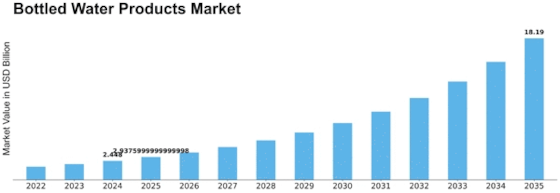

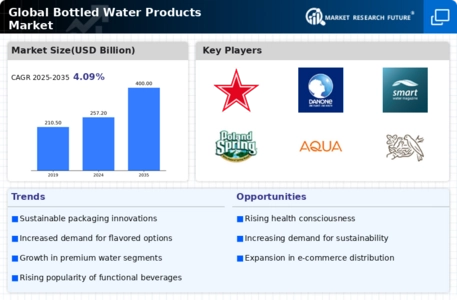
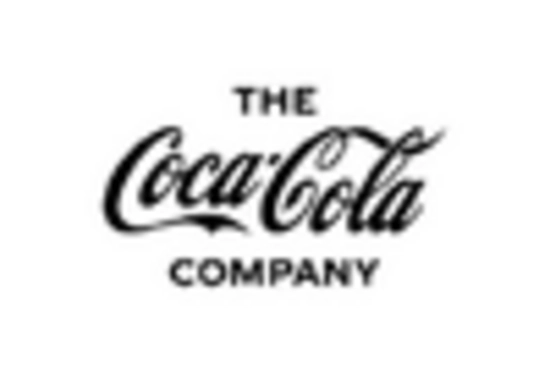
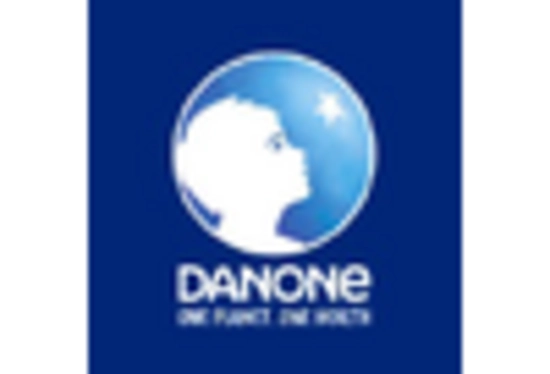
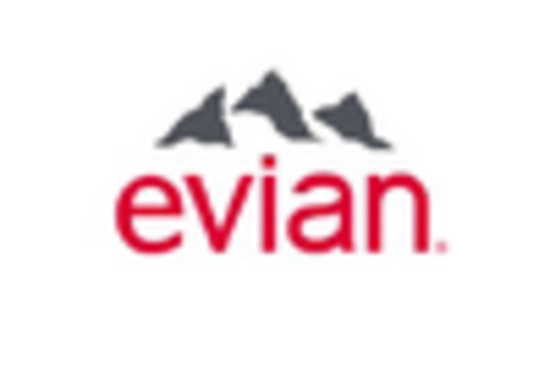

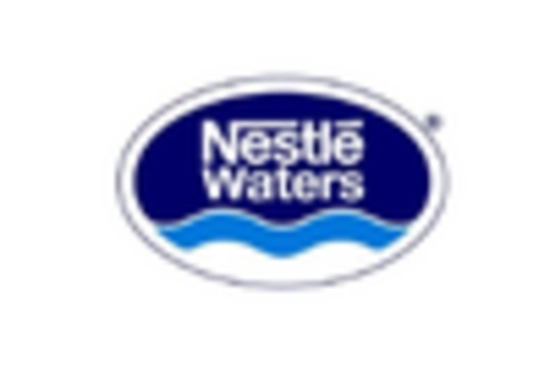
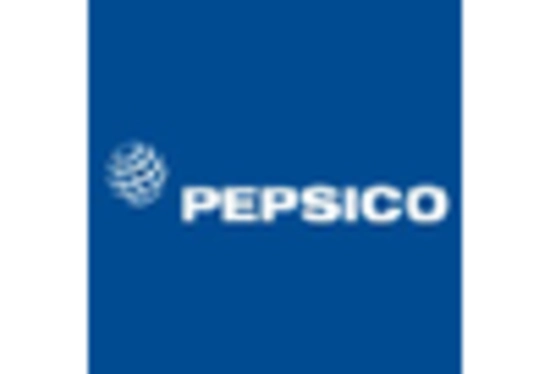

Leave a Comment